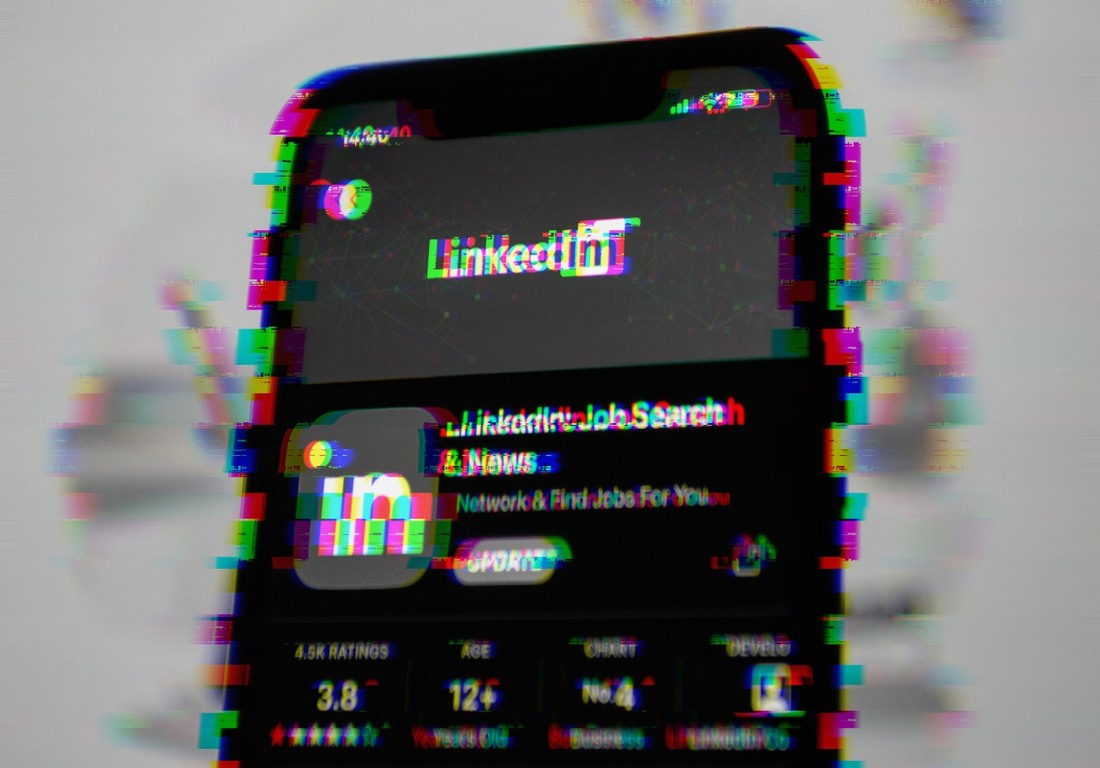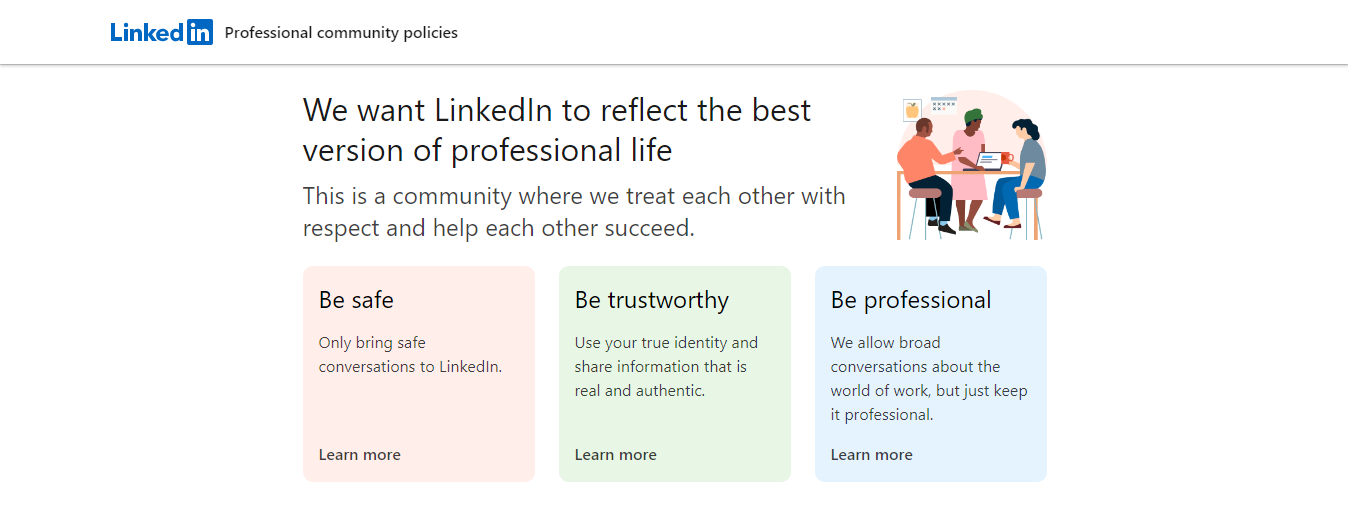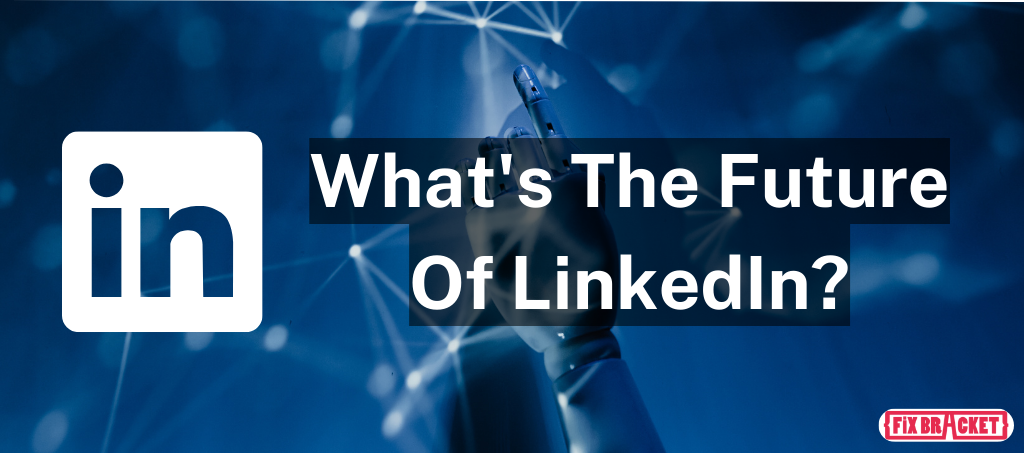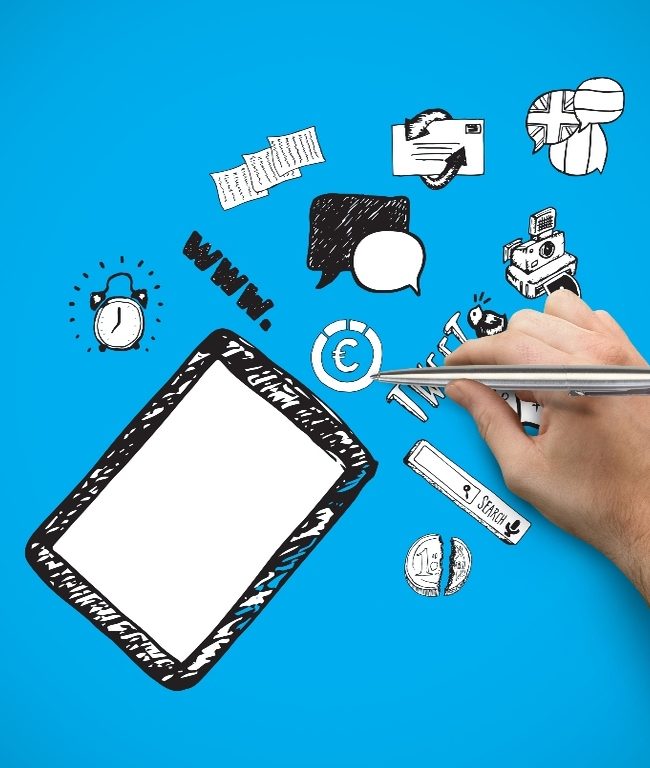
In today’s interconnected professional landscape, LinkedIn has emerged as a vital platform for networking, career advancement, and business opportunities.
Boasting a vast user base of over 740 million professionals worldwide, LinkedIn provides a digital ecosystem where individuals can showcase their skills, connect with industry peers, and access a plethora of career resources.
However, despite its immense benefits, the account occasionally restricts user accounts, causing inconvenience and frustration.
It is essential to understand that the platform employs a range of security measures and algorithms to maintain a trustworthy and reliable environment for its users. These measures include automated systems that monitor user activity and patterns to identify any violations of LinkedIn’s terms of service.
In some cases, certain actions or behaviors may trigger these systems, leading to the restriction or temporary suspension of a user’s account.
This article aims to address the reasons behind these restrictions and provide actionable steps to resolve such issues.
What LinkedIn Does NOT Want You To Do

LinkedIn Professional Community Policies
LinkedIn, being a professional networking platform, has established certain guidelines to ensure a positive and trusted environment for its users. To maintain the integrity of the platform, it is important to understand what it doesn’t want you to do.
First and foremost, the platform discourages the use of misleading or inaccurate information on your profile. It is crucial to provide truthful and up-to-date details about your professional background, skills, and experiences.
LinkedIn also frowns upon spamming activities. Sending unsolicited messages, connection requests, or promotional content in bulk can be perceived as intrusive and disruptive.
Also, engaging in inappropriate or offensive behavior is strictly prohibited on LinkedIn. Posting or sharing content that contains hate speech, discriminatory remarks, explicit material, or violates intellectual property rights can result in severe consequences.
And the biggest problem is creating fake profiles or impersonating others. Representing yourself as someone you’re not, not only violates LinkedIn’s guidelines but also erodes the trust and credibility within the professional community. So ALWAYS use your real name, profile photo, and other details.
So building authentic connections, sharing valuable content, and conducting yourself with professionalism and integrity will not only protect your account from restrictions but also enhance your overall experience.
Some Additional LinkedIn Guidelines to consider

Major LinkedIn Guidelines To Follow
Now we will explore some of the major guidelines that you should be aware of and follow to avoid account restrictions and maximize your success on the platform.
Respectful Engagement: LinkedIn encourages respectful and constructive engagement within the professional community. Treat others with courtesy and respect, even if you disagree with their viewpoints.
Connection Requests: Building a strong network is essential, but it’s important to approach connection requests strategically. Avoid sending out a large number of generic or indiscriminate connection requests. Instead, personalize your requests by explaining why you want to connect and how you can mutually benefit from the connection.
Reporting Violations: LinkedIn provides reporting features to address any violations of its guidelines. If you come across content or behavior that violates LinkedIn’s terms of service, you can report it to the platform. This helps maintain a safe and professional environment for all users.
By following these major guidelines, you can navigate the platform successfully and avoid account restrictions.
How Do I Recover My Account?

Temporary and permanent LinkedIn account restrictions are measures taken by LinkedIn to enforce its guidelines and ensure a safe and professional environment for users.
Temporary restrictions involve limitations placed on an account for a specific duration, usually due to minor violations or suspicious activity. This can include reduced visibility of posts, limited messaging capabilities, or temporary suspension.
Permanent account restrictions, on the other hand, result in a permanent suspension of the account, prohibiting further access. These are typically enforced for severe violations, repeated offenses, or engaging in harmful activities.
As we can only fix a temporary account restriction, let’s explore how to do so.
How to Fix Temporary LinkedIn Account Restriction?
Finding your account temporarily restricted can be disruptive to your professional networking efforts.
Now, we will guide you through the process of fixing a temporary account restriction. By following the actionable steps outlined below, you can regain full access to your account and continue leveraging the platform for your professional growth.
1. Understand the Reason for the Restriction:
Start by reviewing the email or notification you received regarding the account restriction. It usually provides some information about the reason behind the restriction.
2. Review LinkedIn’s Terms of Service and Community Guidelines:
Familiarize yourself with LinkedIn’s terms of service and community guidelines to ensure you understand the platform’s rules and expectations.
3. Contact LinkedIn Support:
Reach out to LinkedIn’s support team through their designated channels to inquire about the specific reasons for the account restriction.
4. Rectify the Issue or Behavior:
If the reason for the restriction is apparent from the notification or email, take immediate action to rectify the issue.
For example, if you were flagged for spamming, review your messaging practices and ensure you’re sending personalized and relevant messages to your connections.
5. Make Necessary Adjustments to Your Account:
Adjust your settings to align with LinkedIn’s guidelines and best practices.
For example, review your privacy settings, connection requests, and posting frequency to ensure they are within acceptable limits.
6. Be Patient and Follow Up:
Understand that the process of resolving a temporary account restriction may take some time. Be patient while LinkedIn reviews your case and takes the necessary actions.
If you haven’t received a response within a reasonable timeframe, politely follow up with LinkedIn support to inquire about the progress and reiterate your commitment to rectifying any issues.

Follow up with LinkedIn customer support
Remember to seek help if needed, be patient, and learn from the experience to prevent future restrictions. With a resolved restriction, you can continue leveraging LinkedIn’s powerful networking capabilities and professional opportunities for your career growth.
Best Safety Practices To Prevent LinkedIn Account Restriction
By implementing the following best safety practices, you can significantly reduce the risk of experiencing a LinkedIn account restriction and ensure a positive and fruitful experience on the platform.
To start, it’s important to familiarize yourself with LinkedIn’s Terms of Service and Community Guidelines. Take the time to read and understand these documents, as they provide crucial insights into acceptable behavior on the platform.
Avoid using misleading or false information, as this can lead to account restrictions. Regularly update your profile to reflect your current professional status.
Focus on building genuine connections with professionals. Avoid sending excessive connection requests to people you have no genuine professional interest in. Also, personalize your connection requests.
Share relevant and professional content on LinkedIn, ensuring it aligns with the platform’s guidelines. Avoid sharing or endorsing offensive, discriminatory, or copyrighted material.
While it’s important to engage with your network and share valuable content, be mindful of your posting frequency. Excessive posting can be seen as spamming and may raise concerns.
Report and block inappropriate or suspicious accounts you come across on LinkedIn. If you encounter spam, fraudulent activities, or violations of guidelines, report them.
Be vigilant for phishing attempts on the platform. Watch out for suspicious messages or requests asking for personal information or login credentials. Verify the authenticity of any requests or messages from LinkedIn before sharing sensitive information.
Keep your account secure by using a strong, unique password and enabling two-factor authentication. Regularly review your account settings and privacy preferences to ensure they meet your desired level of security. Just an additional safety tip.
Continuously educate yourself about LinkedIn’s latest features, updates, and guidelines. Stay informed through official channels and resources.
By implementing these best safety practices, you can minimize the risk of experiencing an account restriction. Remember, maintaining a professional and authentic presence, respecting others’ boundaries, and adhering to LinkedIn’s guidelines are key to a successful and secure experience.
LinkedIn Account Recovered? Here’s What To Do Next.
Congratulations on successfully recovering your account!
However, it’s crucial to remember that you’re still under scrutiny from LinkedIn. One misstep could result in a permanent ban, and we want to avoid that.
To ensure a smooth experience moving forward, here’s our simple two-step process to keep in mind after recovering your account:
Step 1: Give Your Account a Fresh Start
Imagine that your recovered account is brand new and follow these best practices for outreach safety:
- Start with a few manual connection requests each day and gradually increase the number.
- Focus on connecting with people who have mutual connections.
- Send personalized and engaging private messages that don’t come across as overly sales-oriented.
- Clean up your old and pending connection requests.
- Prioritize personalization in your interactions.
Step 2: Utilize Safe Tools
Ready to generate a wealth of high-quality leads from LinkedIn while staying safe?
Consider using cloud-based tools instead of Chrome-based ones. They not only offer a wide range of new LinkedIn features to support lead generation and automation but also come with enhanced safety measures.
Remember, the way you use these tools plays a significant role in maintaining safety.
What’s The Future Of The Platform?

What’s The Future Of LinkedIn?
LinkedIn has come a long way since its inception in 2002 as a professional networking platform. With over 740 million members worldwide, it has transformed into an indispensable tool for professionals across various industries.
However, as the digital landscape evolves and new technologies emerge, it’s natural to wonder about the future of the platform.
In this section, we’ll explore some potential directions and advancements that may shape the future of this influential platform.
Enhanced Personalization and Artificial Intelligence (AI)
LinkedIn has already started leveraging AI to provide more personalized user experiences. In the future, we can expect AI algorithms to become even more sophisticated, offering tailored content and job recommendations based on users’ preferences, skills, and career goals. AI-powered chatbots may also play a significant role in facilitating real-time communication and support on the platform.
Deeper Integration with Learning and Development
LinkedIn Learning, the platform’s online education portal, has gained popularity as professionals seek continuous skill development. The future may see stronger integration between professional networking and learning, with personalized learning pathways and micro-credentials tied to users’ profiles. Collaboration with educational institutions and industry leaders could further enhance the platform’s value as a hub for professional growth.
Emphasis on Remote Work and Flexibility
The COVID-19 pandemic accelerated the shift toward remote work, and LinkedIn has adapted accordingly. The future may see a continued focus on remote work opportunities, freelancing, and flexible employment options. Improved search filters and features specific to remote work, such as remote job boards and virtual networking events, could become more prevalent.
Video and Multimedia Integration
The platform has been steadily embracing video content, and the future will likely see a more extensive integration of multimedia formats. Video profiles, live streaming for professional events, and interactive multimedia presentations may become common features. This shift will allow professionals to showcase their skills, expertise, and personalities more dynamically and engagingly.
Expansion into Emerging Markets
LinkedIn’s growth has been remarkable, but there is still significant potential for expansion in emerging markets. The future may involve tailored strategies to cater to the unique needs and preferences of professionals in regions such as Asia, Africa, and Latin America. Localization efforts, language support, and partnerships with local organizations could help LinkedIn establish a stronger presence globally.
Continued Emphasis on Diversity, Inclusion, and Equity
As workplace diversity and inclusion become increasingly important, LinkedIn will likely continue to champion these values. The platform may introduce more features to promote equitable opportunities, highlight diverse voices, and foster inclusive communities. LinkedIn’s commitment to addressing bias and promoting fairness in recruitment processes may also evolve, leveraging technology to reduce unconscious biases.
Integration with Emerging Technologies
The future of the social media platform could witness integration with emerging technologies such as blockchain, virtual reality (VR), and augmented reality (AR). Blockchain-based credential verification could enhance the trustworthiness of profiles and certifications. VR and AR could offer immersive networking experiences, virtual job fairs, and remote collaboration opportunities.
With advancements in AI, personalized learning, remote work, multimedia integration, expansion into emerging markets, diversity and inclusion initiatives, and integration with emerging technologies, LinkedIn is poised to remain a vital platform for professionals worldwide.
By adapting to the evolving needs of its user base and leveraging innovative technologies, the platform will continue to provide invaluable networking, learning, and career advancement opportunities in the years to come.
Conclusion
In the dynamic world of professional networking, LinkedIn plays a crucial role in connecting individuals, fostering career growth, and expanding business opportunities. However, encountering an account restriction can disrupt your progress and limit your access to the platform’s resources.
This article has shed light on the reasons behind LinkedIn account restrictions and provided actionable steps to resolve such issues.
Reviewing LinkedIn’s user agreement and community standards is the first step to rectifying the issue. By familiarizing yourself with these guidelines, you can ensure that your future interactions on the platform align with LinkedIn’s expectations.
Reaching out to LinkedIn’s support team is vital in resolving account restrictions. Their expertise and guidance can help you navigate through the restoration process effectively.
Ultimately, encountering an account restriction should be seen as an opportunity for growth and reflection. Learn from the experience, evaluate your actions, and make adjustments to enhance your professionalism and networking practices.
People Also Read:
LinkedIn Groups SMBs Follow For Digital Marketing Tips
LinkedIn Groups For UX Designers
LinkedIn Strategies To Skyrocket Your Small Business




